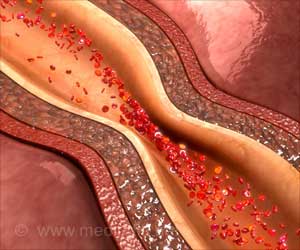“We are really enthusiastic about this technology,” Tirrell said. “It directly targets the site of the inflammation and could have implications in a variety of vascular disorders.”
In atherosclerosis, arterial walls thicken and harden, disturbing blood flow. That leads to a buildup of plaque, which could ultimately lead to blocked arteries.
Studies have linked microRNA-92a (miR-92a) to dysfunction of the endothelial cells. miR-92a could be considered a biomarker of the disease.
While a miR-92a inhibitor treatment exists, it cannot yet be delivered directly to the blood vessel site, and therefore is not as effective as it could be. Several years ago, Tirrell and Fang developed a nanoparticle to deliver the inhibitor directly to inflamed blood vessel cells.
This nanoparticle uses a peptide to target the vascular cell adhesion molecule 1 (VCAM-1), which is found in high levels in inflamed endothelial cells but remains low in healthy cells.
The team has tested the nanomedicine in a mouse model and found that it reduces the size of vascular lesions. They also found that the treatment inhibited stenosis, the remodeling of vascular tissue that causes it to close off.
“That means this nanoparticle could be used during treatments like angioplasty or the insertion of a stent, improving outcomes of those procedures and reducing the chance of stenosis,” Tirrell said. It could also be used to treat patients who are suffering from complications of vascular disease.
“Our nanoparticle could be used to prevent subsequent cardiovascular events,” Fang said.
The team will continue to test the treatment with the goal of eventually completing human trials.
“Almost all vascular disorders are associated with this inflammation, so this treatment could be used toward a wide range of diseases,” Fang said.
Source: Medindia



